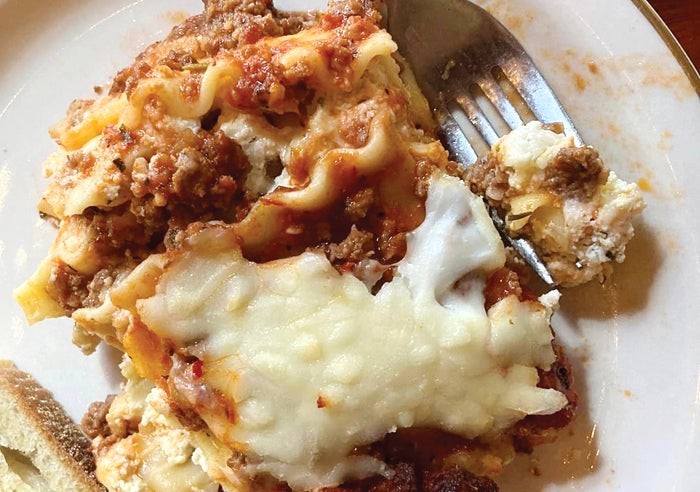Degree column: Eat whole grains for health
Published 12:00 am Wednesday, August 31, 2011
By Toi Degree
For the Salisbury Post
Studies show that eating whole grains instead of refined grains lowers the risk of many chronic diseases. While benefits are most pronounced for those consuming at least three servings daily, some studies show reduced risks from as little as one serving daily. The message: every whole grain in your diet helps!
So what are whole grains?
Whole grains are grains that have not had their germ and bran removed through heavy processing called milling. These complete grains are excellent sources of fiber, an essential part of food that your body does not digest. Eating foods that are high in fiber tones your digestive system and lowers your cholesterol levels. Additionally, a high fiber diet is more filling. The fiber in food stays with you longer and helps you to feel satisfied between meals. When you eat a good variety of whole grains, you will be sure to get more nutrients than you would eating the same foods prepared with refined grains.
What are the benefits of eating whole grains?
The benefits of whole grains most documented by repeated studies include:
• Stroke risk reduced 30-36 percent
• Type 2 diabetes risk reduced 21-30 percent
• Heart disease risk reduced 25-28 percent
• better weight maintenance
Other benefits indicated by recent studies include:
reduced risk of asthma
• healthier carotid arteries
• reduction of inflammatory disease risk
• lower risk of colorectal cancer
• healthier blood pressure levels
• less gum disease and tooth loss
So, how can you go about incorporating more whole grain into your diet?
It really isn’t very hard to incorporate more whole grains into your diet once you know which of the foods are whole grains-based. Let’s begin with the most important meal of the day breakfast: whole grain cereals for breakfast — what a great start!
When shopping for your breakfast cereals, be sure that they too, are a whole grain product. The Whole Grains Council has created an official packaging symbol called the Whole Grain Stamp that helps consumers find real whole grain products. The Stamp started to appear on store shelves in mid-2005 and is becoming more widespread every day.
Until the Whole Grain Stamp is on all foods, consumers are encouraged to check the label to be sure that the product is an actual whole grain product. There are numerous whole grain cereal options available to consumers. Oatmeal is considered a whole grain hot cereal. Not only is oatmeal a whole grain cereal, it also has a lot of fiber in it along with other essential vitamins. Cold cereals such as Honey Bunches of Oats are classified as a whole grain cereal, and so is Kashi. Other whole grain breakfast cereals are Grape Nut Flakes, Healthy Choice types of cereals, Chex or Multi-grain cereals, and Puffed Wheat. Total is another whole-grain type cereal.
Replace your bread with a whole grain version. There are many delicious varieties of whole grain breads available at your grocery store. You can choose from whole wheat, multi-grain, oat, and many others. These whole grain bread products are also available as English muffins, bagels and tortillas. When selecting the bread product, be sure that the label specifically states “whole grain” as the first ingredient.
When shopping for pasta, select the whole grain versions, now commonly available in grocery stores. The availability of these whole grain pasta items is increasing, as are the varieties they are available in. Also, consider replacing your white rice with brown rice, as it too, is a healthier whole grain option for your family.
Most popular brands of snack crackers have also come out with a whole grain version to meet the growing demand for whole grains and remain competitive. Replacing your current snack crackers with one of the whole grain varieties is an easy and tasty way to get yet another serving of whole grains into your diet. For a snack, try eating some whole-wheat crackers along with some raw vegetables. Ritz has some great-tasting whole-wheat crackers that are quite good. You could also spread some peanut butter on these if you wish. Nabisco Triscuit and Wheat Thins are also whole grain crackers.
There are many ready-made whole grain versions of other popular products available to consumers, such as pancakes, waffles, muffins, cookies and more. Eggo now makes whole grain waffles. These are good with lite or sugar-free syrup. The waffles are low-fat too. Or, if you enjoy baking, you may wish to consider replacing your white flour with healthy whole grain alternative flour. You can add bran to muffin mixes, whole oats to cookie dough: the possibilities are endless.
I encourage you to start to incorporate whole grains into your diet. It may take some getting used to, but the benefits outweigh any temporary trauma to your taste buds. Just give it a try; you may like it more than you think.
For more information on whole grains visit: http://www.wholegrainscouncil.org/ or www.myplate.gov
Toi Degree is a family and consumer education agent with North Carolina Cooperative Extension. Contact her at 704-216-8970 or toi_degree@ncsu.edu.





